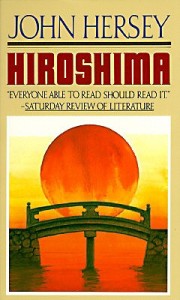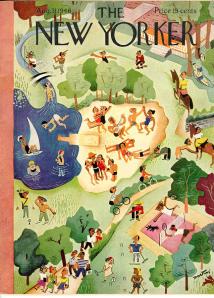After a semester so full of reading and MLA preparations that this blog completely fell off the radar, I have quite a backlog! The next few weeks will be full of short thought-posts, mostly on the novels that I’ve been buried in since last I appeared here. So much for “time enough at last!”
I’ll start this deluge off with a few notes on Kerouac’s On the Road. Part of the challenge of reading for coverage is to find a way to connect your own interests to a text without forcing a reading on it. There are, then, a number of reasons for me to find On the Road valuable. Foremost is its attention to questions of space and place (key issues for environmentalism), and, not unrelatedly, its commitments to a certain mobility that destabilizes the localism that I find so overrepresented in discourses about American environmentalism, if not environmentalism itself (indeed, Ursula Heise cites Kerouac as one of many influences that perhaps perversely produced American localism by creating an uneasy sense of rootlessness!). What really helped me zero in on what I found so compelling and yet so frustrating about Kerouac’s classic tale of hipster ennui is the way that it rewrites Transcendentalism. It’s common knowledge that Ginsberg was writing to Whitman: what happens to our reading of Kerouac if we consider the possibility that Kerouac was writing to Emerson in much the same way?
I’m speaking here particularly to the Emersonian commitment to a certain relationship to nature that moves beyond empiricism into transcendental comprehension, to an orientation that allows one to see universal patterns just under the surface of the natural world. Kerouac’s brand of Transcendentalism takes on the 19th-century movement’s commitment to radical individuality and the resistance via mysticism to totalizing institutions. Yet the material from which he attempts to deduce the patterns of truth is not “nature,” defined as the absence of the human. It is rather the very human communities and landscapes through which Sal Paradise and Dean Moriarty tumultuously careen. The novel highlights Paradise’s keen attention to apparently coincidental similarities in behavior across his various acquaintances (quotes TK when I have my dogeared copy and its copious margin notes in hand!), and his narrations of these similarities are energetic, even exuberant. They suggest that he believes himself to be honing in on some truth-infused pattern, some Emersonian point of access to the transcendent and infinite divine.
This is a refreshing departure from Transcendental definitions of nature that generate problematic idealizations of Romantic wilderness and a total lack of attention to human interaction with (and membership within) the “natural” world, a binary that a great deal of work (particularly that by Timothy Morton, though William Cronon’s critique of “wilderness” deserves more attention than it has been given) has recently sought to break down. Yet this is less a critical reimagining of the subject-object binary, and the culture-nature binary it enables, than a flattening such that everybody Sal and Dean encounter—particularly women and people of color—become objects, available for evidence in the same way that nature was for Emerson. I am left with two abiding questions: how to narrativize the deconstruction of these binaries in a less problematic and more dialectical way, and (which follows from the precious question) how to conceive of a Transcendental or Beat/proto-Transcendental collectivity, rather than a small group of individuals seeking to extract meaning from the objectified human masses. My sense is that a preliminary answer to both questions can be found in a consideration of Whitman and Ginsberg—and perhaps, à la Wai Chee Dimock, in the complex and transtemporal relationship between their two oeuvres.




